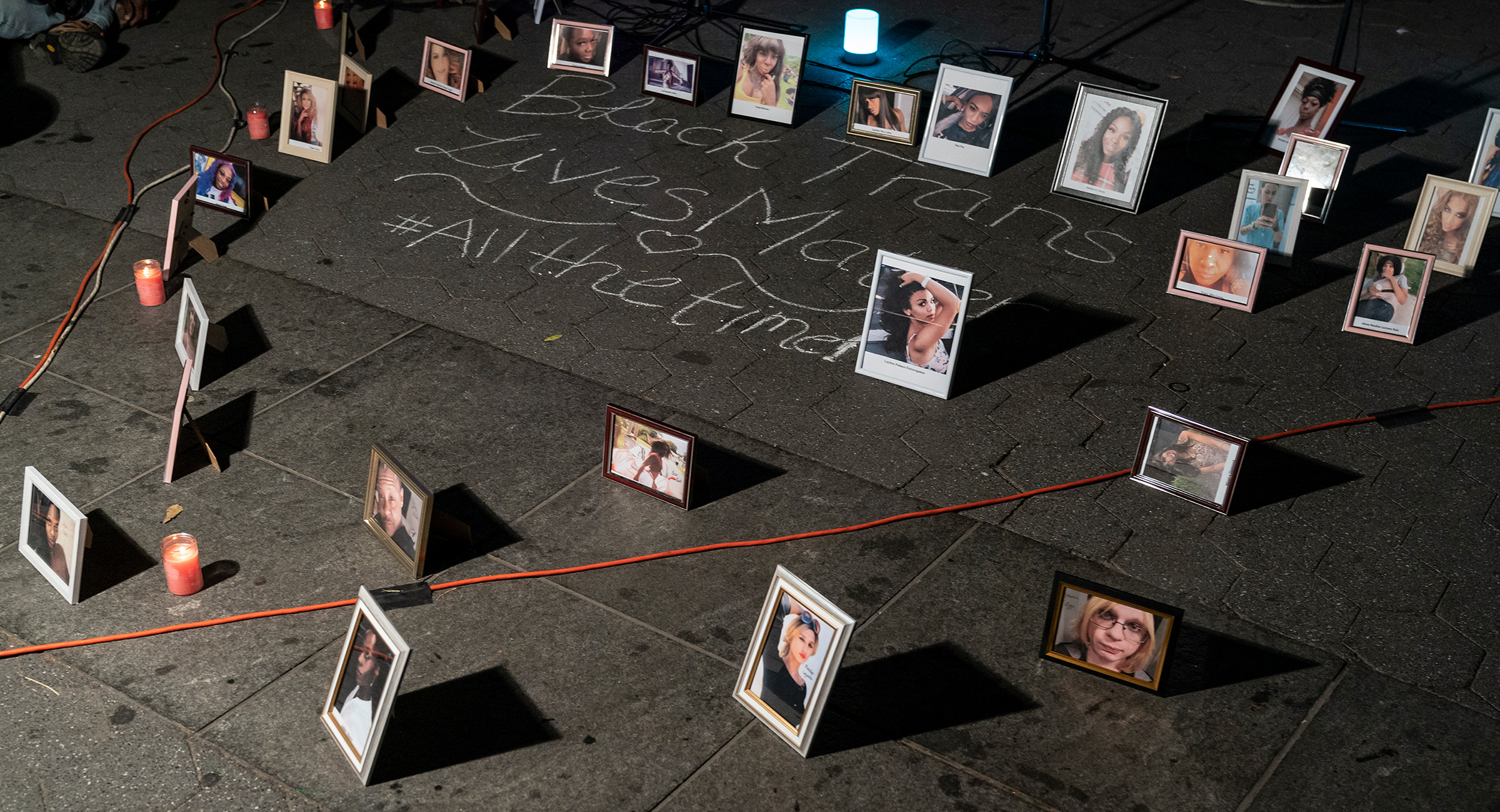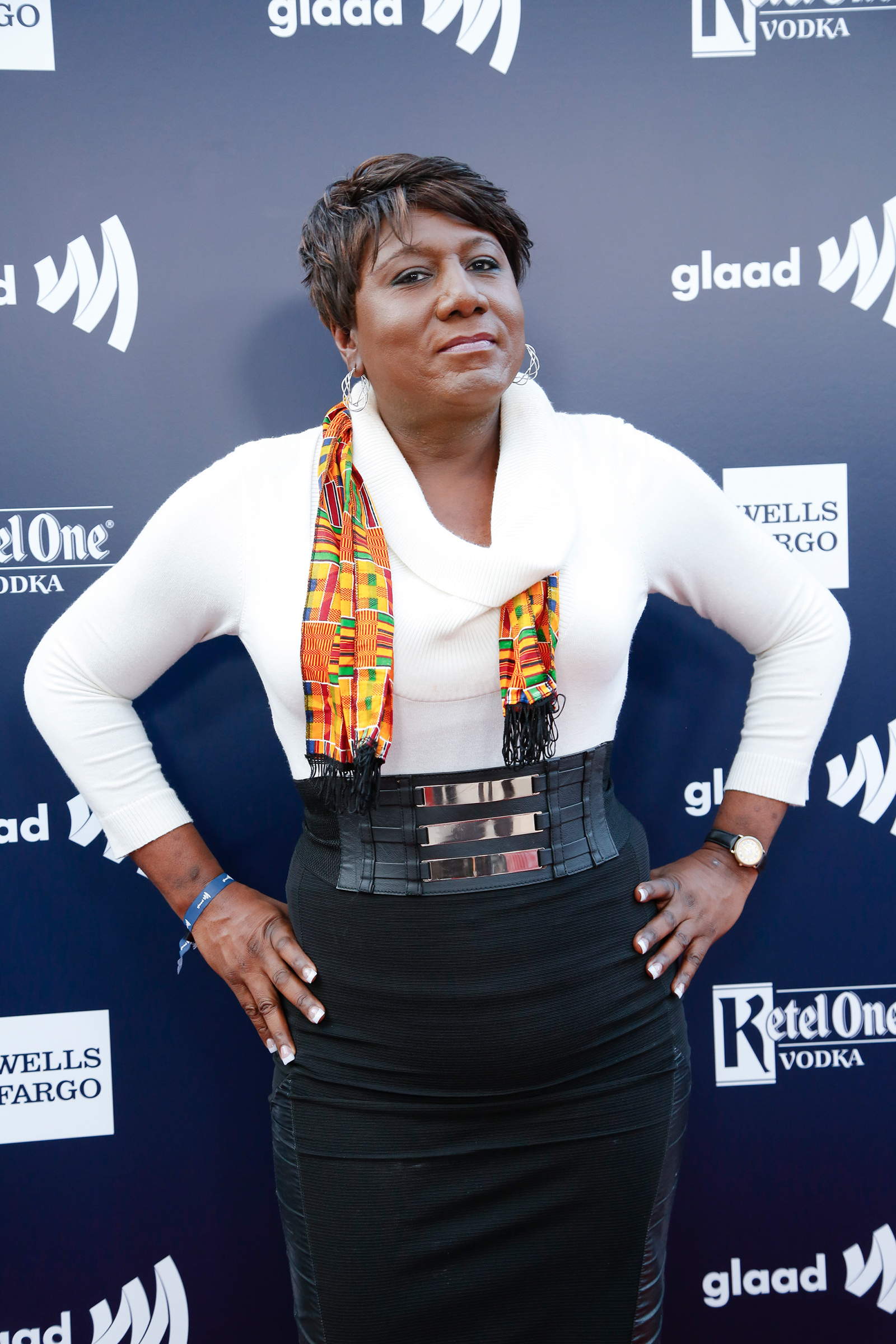
Monica Roberts began tracking violence against the trans community in 2006, long before national organizations, governmental agencies, and, perhaps most important, the media, were paying close attention. Her award-winning blog, TransGriot, aggregated local news, police reports, and community-sourced information. Her no-frills style of reporting and her reputation as a trusted journalist and blogger in the community made her a critical resource. Tapping into a rich network of trans people on social media and tips received via email, Roberts was a go-to for trans activists across the country, particularly during a time when the media wasn’t regularly reporting on the killings of trans people or doing so in a way that honored the lives of those lost.
“Monica was making sure that not only was she cataloging these murders, whenever there was an article that was written when the person was misgendered, she was able to write the article correctly,” said trans activist Dee Dee Waters, who was also a longtime friend of Monica. “It was really good to have her, as we tried to conquer a lot of this transphobic stuff.”
In West African culture, a griot is a tribal storyteller who acts as an advisor to leaders and serves as a living archive. For more than a decade, Monica offered that crucial service to a community that is often overlooked and mistreated. When I worked at the New York City Anti-Violence Project (AVP), part of my job was to track violence against LGBTQ people, and Monica’s blog was invaluable. She regularly broke stories that went beyond the violence that trans communities disproportionately face. As a growing movement and understanding for trans communities progressed in the aughts, so did her coverage, with posts about trans people in politics, music, and TV and film.
As individual states act with increasing hostility to trans people—The Washington Post reported that, as of Oct. 13, more than 155 pieces of anti-trans legislation had been introduced this year alone—violence against the trans community is only going to get worse. These laws attack bodily autonomy and self-identification, as well as deny crucial medical care and have introduced harmful discussion about sexual orientation and gender identity. Which means we need people in the world—from the mainstream media to elected officials to allies of trans and nonbinary people—to sit up, pay attention, and spread the word of the ongoing violence trans people face.
In the fall of 2020, Monica died at 56 years old. Her unexpected death, due to blood clots in her lungs, reverberated throughout the LGBTQ community. The Association of LGBTQ Journalists (NLGJA) lauded her groundbreaking journalism, and the National Association of Black Journalists (NABJ) posthumously inducted her to its hall of fame. Her blog now lives on as an archive, and more digital content will be produced by Transgriot LLC under the leadership of Waters, with plans to continue additional reporting on the issues facing Black trans Americans.
The legacy she left is one of watching out for and taking care of her community, especially in moments when it seemed as if few outside of the community were listening or taking action. In one of Monica’s last posts on anti-trans violence, she documented the murder of Selena Reyes Hernandez, who was shot and killed by 18-year-old Orlando Perez after she disclosed that she was transgender to him. “She is the sixth Latinx transperson to die in 2020 and the 14th transperson this year, but I’m just now finding out about this May 31 murder because of misgendering of her by the Chicago medical examiner, Chicago PD and the Chicago media,” wrote Roberts on her blog. “Even her family went there in disrespecting her in death, choosing to bury her in her native Mexico under her deadname.”

In 2019, the American Medical Association (AMA) and the Human Rights Campaign (HRC) called the killings of trans Americans an epidemic following at least 28 homicides in 2018 and 25 homicides in 2019. “According to available tracking, fatal anti-transgender violence in the U.S. is on the rise and most victims were black transgender women,” said AMA board member S. Bobby Mukkamala, M.D., in a 2019 press release. “The number of victims could be even higher due to underreporting and better data collection by law enforcement is needed to create strategies that will prevent anti-transgender violence.”
Since then, homicides of trans people have doubled to historic levels of violence with limited media attention or public outcry. In 2020, there were at least 44 homicides of trans and nonbinary people, and 57 in 2021, and 33 so far through this year, according to Sue Kerr, a blogger and social worker who is one of the few individuals tracking violence against trans folks.
“When Kathryn Newhouse was killed in Georgia, nineteen, murdered by her father. And she’s AAPI, she’s autistic, and she has mental health issues. All these intersections, no one wrote about it,” Kerr said about a murder that happened March. “The one thing I’ve noticed that’s a big difference from when I was writing these in ‘14, ‘15, ‘16, is that people on the ground, usually the friends of the deceased, are all over the media.”
This was the case for 28-year-old Brazil Johnson, who was shot and killed in Milwaukee, Wis., in June. Johnson’s family and friend’s described her to a local outlet as “kind-hearted.” The family and friends of 50 year-old Nedra Sequence Morris, who was killed in May, organized a vigil on her behalf to demand justice. The friends and community of trans people, commonly known as chosen family, now serve as unofficial media spokespersons, and become advocates for their friends, or loved ones after death.
There are a handful of individuals and organizations across the country tracking the violence against trans people. The Anti-Violence Project (AVP) continues to lead a national coalition of organizations doing data collection on anti-LGBTQ violence. TransLashMedia, led by trans media personality Imara Jones, marks each trans individual’s death on their Instagram channel. HRC also tracks anti-trans violence and releases an annual report. Every year the constant has been an emphasis from advocates to say “at least” alongside any number about the murder of trans people—knowing that with the limited available tracking, there are names of trans people whose stories go untold.
It’s important to remember that violence against marginalized communities does not begin with murder. It starts with the acceptance, both passive and deliberate, of increasingly hateful rhetoric, which fuels legislation and emboldens people to commit acts of violence. Trans people, disproportionately Black trans women, are facing violence on the streets and from intimate partners, family, or co-workers, and from legislation that aims to dehumanize and ultimately eliminate trans people from the public space. There’s a growing animus against trans people that manifests as violence in real life, and we must call it out for what it is.
Every year, on Nov. 20, the LGBTQ community remembers the lives of those lost for the Transgender Day of Remembrance. This year—and every year after—Monica will be remembered as a ferocious leader who cared enough to look out for the needs of her community. She was not only taken too soon, and her absence from our movement will be felt immensely, her care and love for her community always remembered. The way to honor her legacy is for all of us to take up part of the work of documenting, amplifying, and paying attention to the attacks trans people are facing. We cannot stand by idly. We must demand justice.
More Must-Reads from TIME
- Breaking Down the 2024 Election Calendar
- How Nayib Bukele’s ‘Iron Fist’ Has Transformed El Salvador
- What if Ultra-Processed Foods Aren’t as Bad as You Think?
- How Ukraine Beat Russia in the Battle of the Black Sea
- Long COVID Looks Different in Kids
- How Project 2025 Would Jeopardize Americans’ Health
- What a $129 Frying Pan Says About America’s Eating Habits
- The 32 Most Anticipated Books of Fall 2024
Contact us at letters@time.com